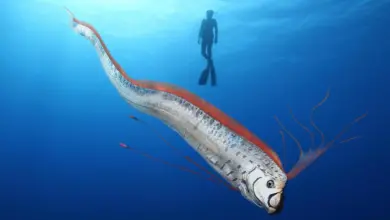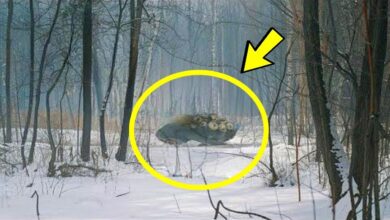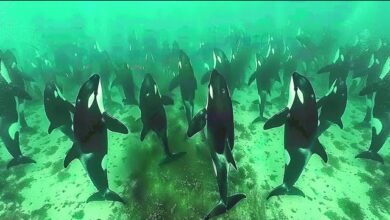The North Pole Had Its Very Own ‘T. Rex’

A species of Tyrannosaurus that lived in the Arctic during the Late Cretaceous period, called **Nanuksaurus**. This is a new species of Tyrannosaurus discovered in Alaska, one of the most remote and isolated places on Earth, where scientists found the remains of a dinosaur skeleton in the Prince Creek Formation in 2006. Researchers initially thought it might be a previously known species of Tyrannosaurus, but after careful study, they discovered that it was a new species, distinct from other Tyrannosaurus species, and named it **Nanuksaurus**, meaning “polar bear dinosaur”.
**Body structure and characteristics**:
– **Nanuksaurus** has similar body characteristics to T-Rex, but is smaller, with a stocky body, large and strong head. They had an extremely sturdy skeleton, which helped create an extremely powerful bite, enough to crush their prey.
– The teeth of **Nanuksaurus**, although smaller than those of T-Rex, could still easily cut through the body of their prey. These teeth were curved and sharp, allowing it to attack effectively and cause fatal wounds.
– **Nanuksaurus** may have lived in harsh Arctic conditions, where winters were very cold and dark for months. Although there is no direct evidence, it is possible that **Nanuksaurus** had feathers to protect its body from the cold.

**Adaptations**:
– To survive in this harsh environment, **Nanuksaurus** may have had a very keen sense of smell, helping it find prey even when blizzards were raging or when it was dark for many days.
In addition, its legs and feet may have evolved to help it move easily on snow and ice. Although there is no physical evidence to confirm this, scientists speculate that it may have had special features that helped it minimize heat loss and move efficiently in the snowy environment.
**Size and role in the ecosystem**:
– Initially, **Nanuksaurus** was estimated to be medium-sized, about 6m long and weighing about 1 ton, but recent studies suggest it could have been much larger, up to 9m and weighing about 3 tons, making it one of the largest predators in the Arctic.
– **Nanuksaurus**’s diet may have included other dinosaurs such as **hydrosaurus** and **ceratopsids**, but **pachyrhinosaurus** was probably the most frequently hunted species. Experts also debate whether **Nanuksaurus** lived and hunted in packs, although there is no direct evidence of this.
**Life and evolution of **Nanuksaurus**:
– **Nanuksaurus** may have faced an extremely harsh environment, with cold and dark winters lasting up to 120 days, making it one of the most resilient dinosaurs. However, sadly, many of the hatchlings and juveniles did not survive, demonstrating the harsh reality of the world of these Arctic dinosaurs.
**Discovery status**:
– Although the discovery of **Nanuksaurus** brings exciting and new information about the dinosaur, there is still much that is unknown about it, and scientists are still looking for more evidence to better understand how this species lived and adapted to the Arctic environment.
In summary, **Nanuksaurus** is a newly discovered dinosaur with unique adaptations for the Arctic environment, expanding our understanding of dinosaur diversity and evolution in cold regions.








